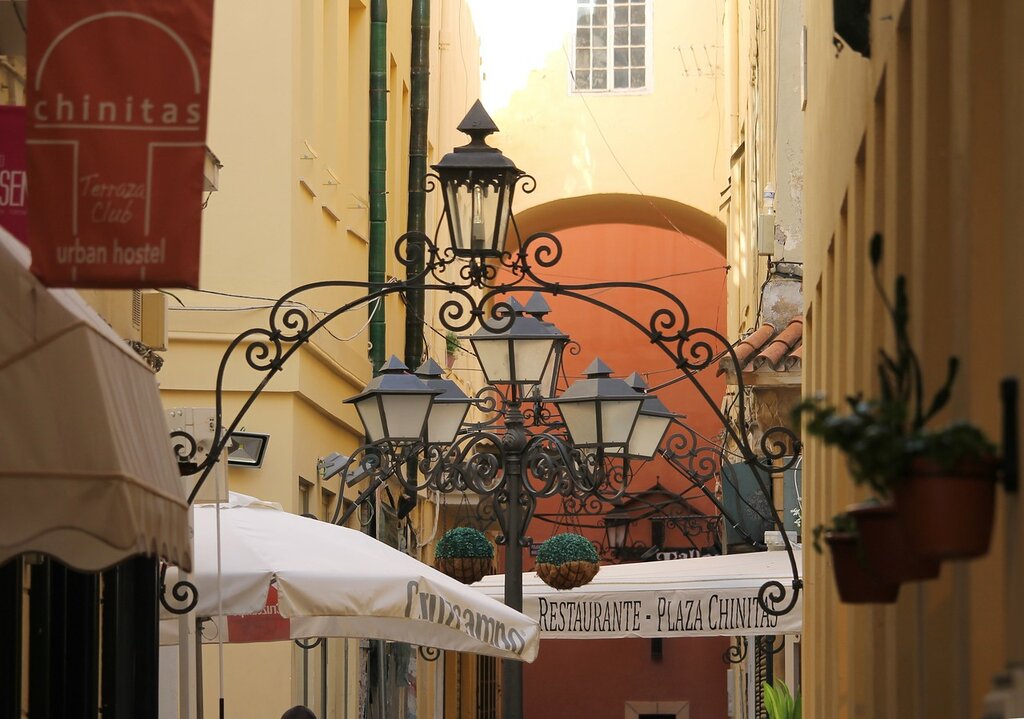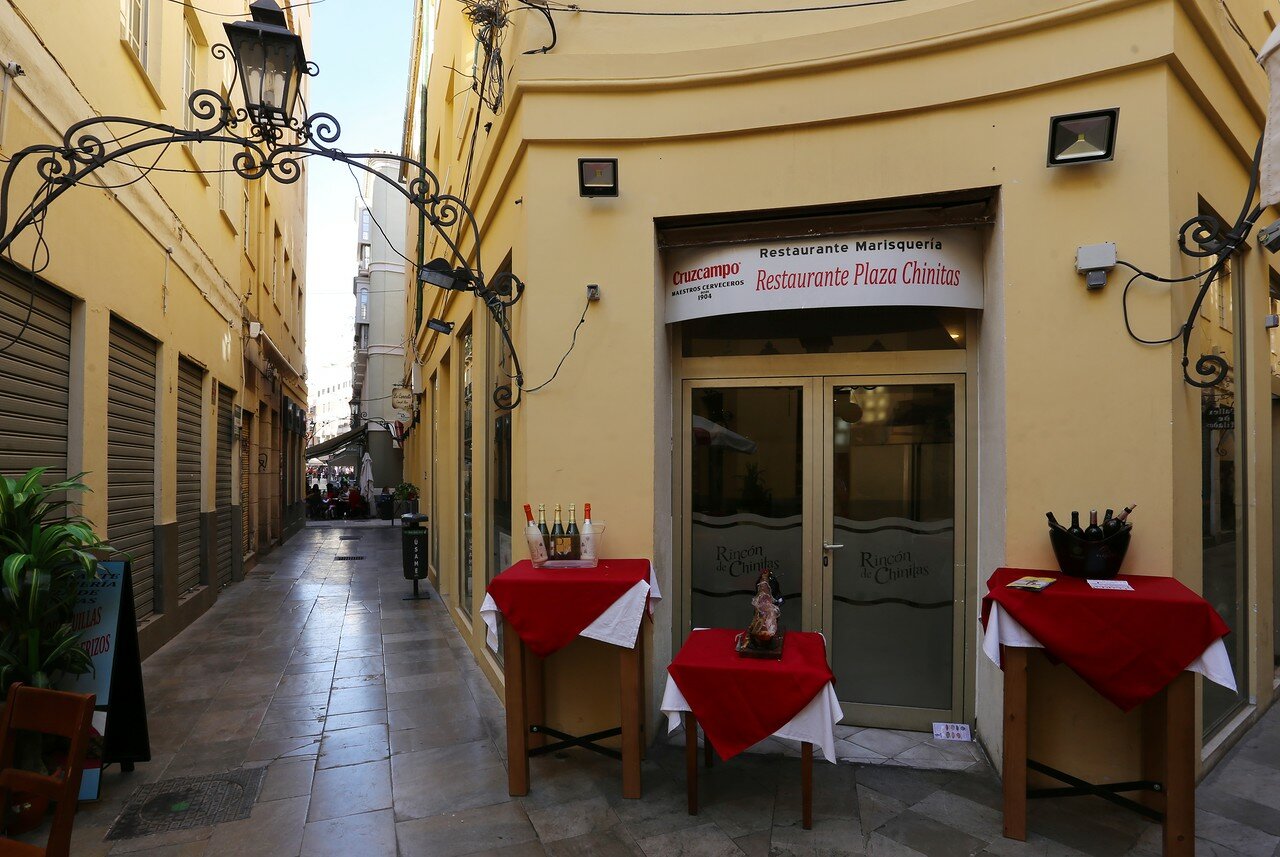Malaga. Pasaje Chinitas
Chinitas pass (on the map) - a narrow cross-shaped street with a small round intersection near Constitution square. In times when bullfighting took place in Constitution square, the passage was used as a bull pen (Toril).

In 1628, an Augustinian monastery was built on this site, which lasted until the middle of the 19th century. As a result of secularization, the property of the monastery became city property and was put up for auction. History does not say how honestly this "tender" was held, but the owner of the monastery buildings became the Governor of Malaga, Antonio Maria Alvarez (Antonio María Alvarez).

Whatever it was, but the deal received a community development new owner has proposed a project restructuring, resulting in the former monastic possessions formed a passage, which had the exact shape of a Greek cross, considerably facilitating the movement in a very complicated grid of streets of the city center. in 1852, the project was approved by the City Council, and again, it is not known how honestly the contractor, who was, as you probably already guessed, the same Antonio Alvarez, used public funds. Two years later, the work was completed, and the new object received the name of the owner.

..

In 1857, the same Alvarez opened in one of his buildings a place of entertainment designed exclusively for private parties - a closed club in our way. In addition, there were several cabarets in málaga, which were periodically scandalous representatives of the city authorities were noted. Alvarez solved this problem in a radical way. It is interesting that behind the bars of the Windows of the institution you can there were props to be seen - quite pious Philistine bedrooms and family living rooms. In the upper floors, however, there were "numbers" for love Affairs. The highlight of the entertainment program was the singer and dancer Chinitas, the same informal name that got the nest of debauchery for high society. The establishment flourished until the end of the "beautiful era", with the beginning of the World war, such entertainment became not quite appropriate. Young ladies have joined the staff local brothels, and the hangout was transformed into a theater cafe, which was favored by local artists, poets and other Bohemian people. The largest the restaurant flourished in the thirties of the twentieth century, when local celebrities Juan Breva and Antonio Chacon performed here. many other artists. Prices at that time were quite affordable for the poor servants of the arts, an entrance ticket that included viewing presentations and a Cup of coffee cost 1.25 pesetas, half a bottle of machaco wine 3 pesetas, a bottle of vintage 7 pesetas. García Lorca, who had been there, even he dedicated one of his poems to this cafe.After the final victory of the francoists in 1937, the cafe, which was considered a hotbed of liberal ideas, was closed, and as it turned out, forever.

In the early sixties, the passage was re-paved, a 19th-century spring was placed in the center, and wrought-iron arches were installed in the alleys. the famous blacksmith of Madrid, Jose Espinosa Alonso. At the same time, on the initiative of garcía Gran, then mayor of Malaga, the passage was named after a singer who shone during the "Beautiful era". It is difficult to say what prompted the mayor to perpetuate the name of the chansonnette. The fountain was completely destroyed by hooligans in 1978, and now there is a stylized iron arched lantern in the center of the square.

A year later, at the beginning of April, I looked again - the restaurants were open, and the walls of the houses and the street lamp were decorated with vegetation.




